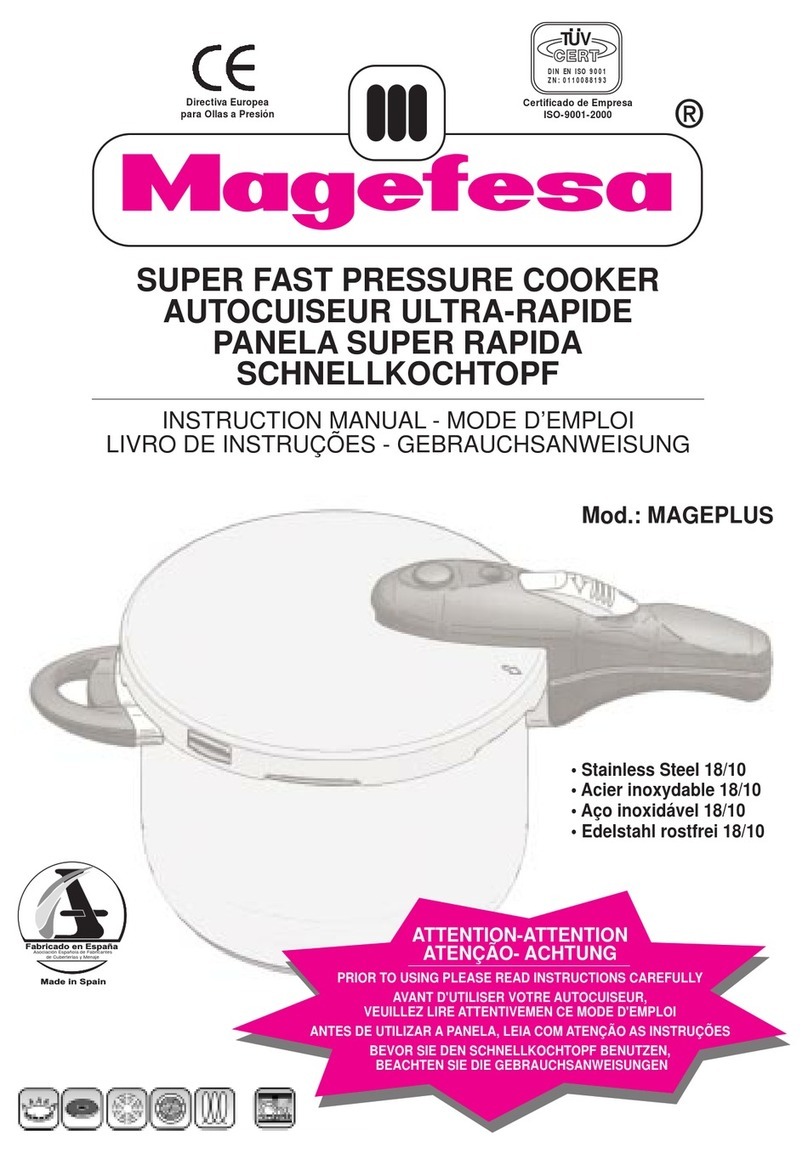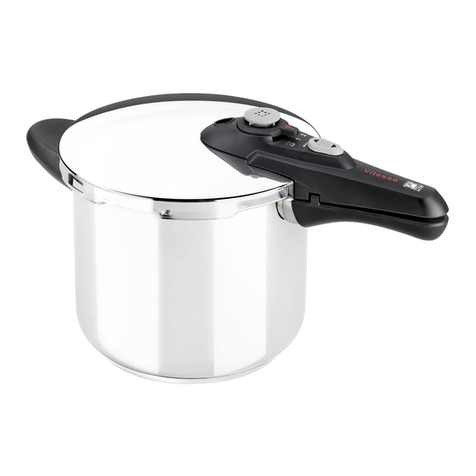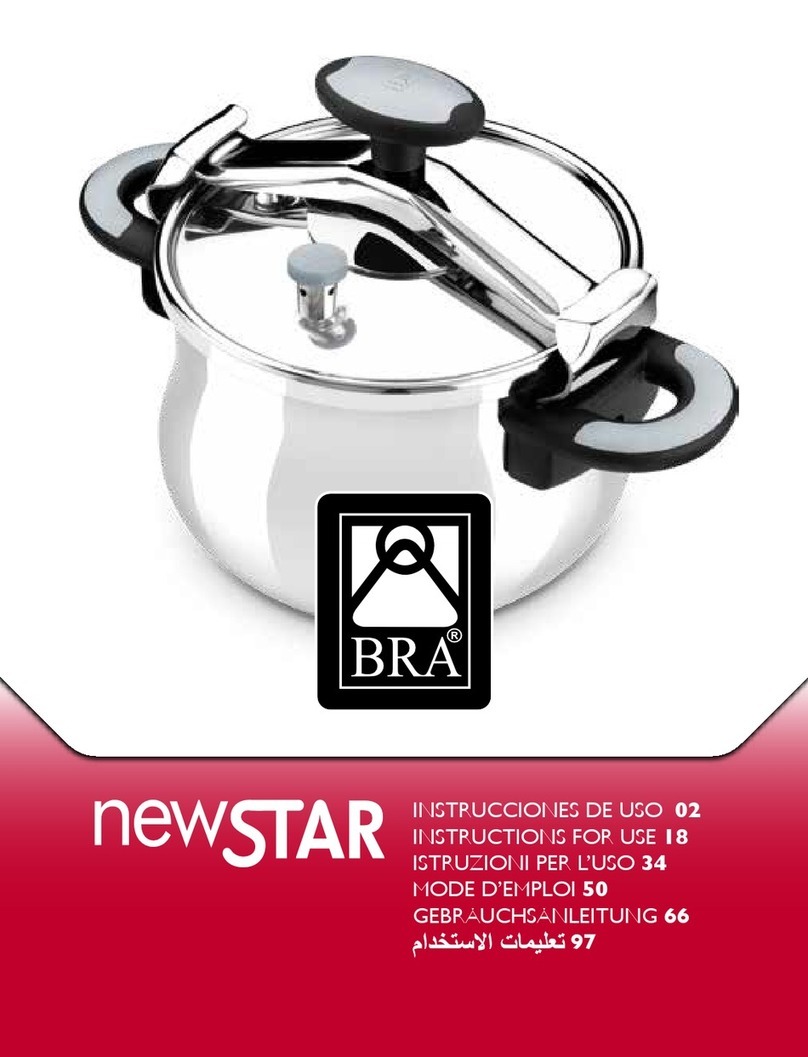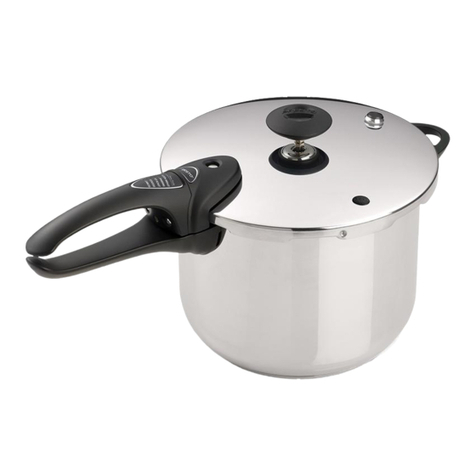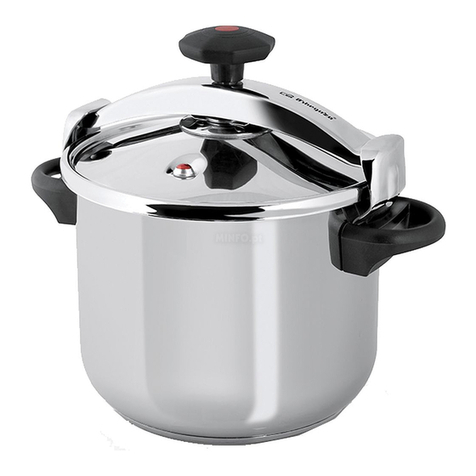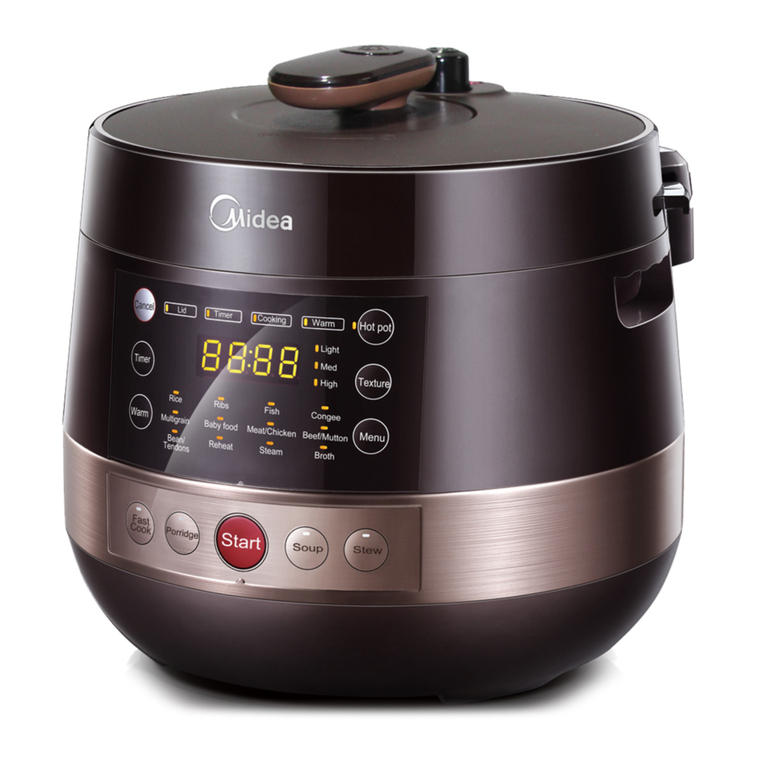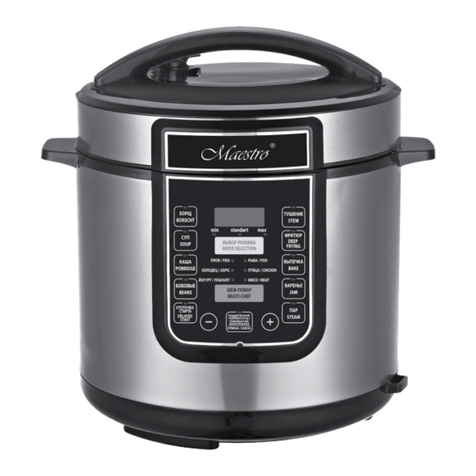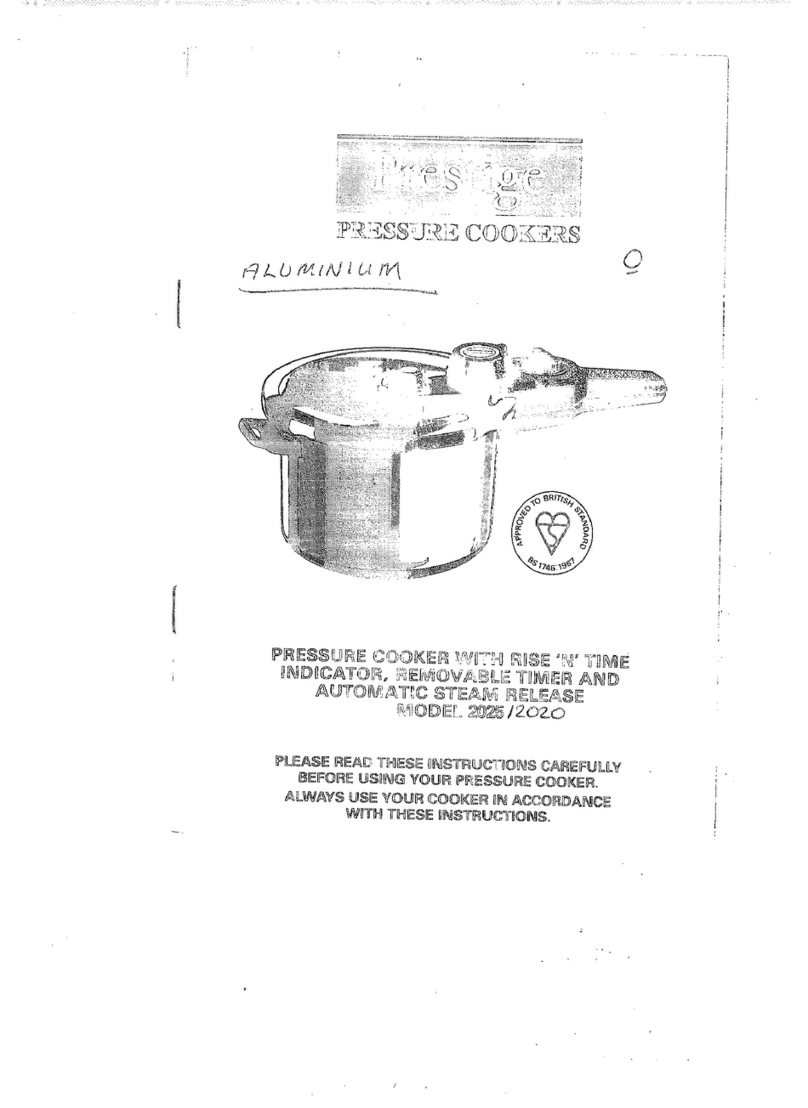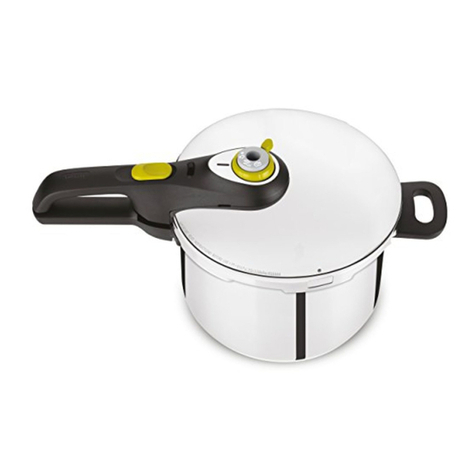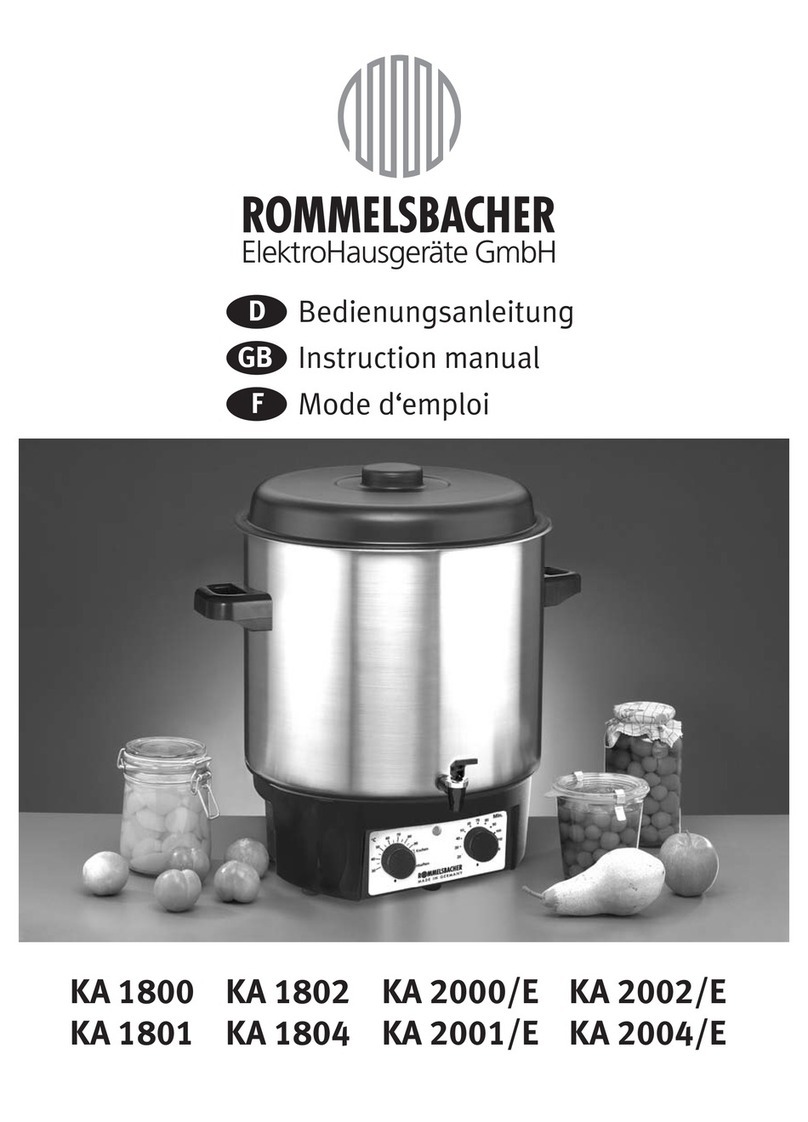1Leer todas las instrucciones.
2No tocar las supercies calientes. Use las asas.
3Una especial atención debe tomarse cuando se usa la olla cerca de niños.
4No coloque la olla en el horno caliente.
5Debe tener una precaución especial cuando traslade la olla llena de líquido
caliente.
6No use la olla para nada que no sea su uso especíco.
7Este aparato cocina a presión. Un uso inapropiado puede producirle quemaduras.
Asegúrese de que está bien cerrada antes de utilizarla.
Ver instrucciones de uso.
8No llene la olla más de 2/3 partes. Cuando cocine alimentos que incrementan su
volumen durante la cocción, como arroz o legumbres, no llene la unidad más de 1/3
del total. Ver instrucciones para la preparación de alimentos.
9No cocine alimentos tales como: compota de manzana, arándanos, cebada, harina
de avena u otros cereales, guisantes, tallarines, macarrones, ruibarbo o espagueti.
Estos alimentos, tienden a producir espuma y a borbotar, pudiendo provocar el
bloqueo de la válvula de seguridad.
10 Siempre compruebe que las válvulas de seguridad no estén obstruidas antes de
usarlas.
11 No abra la olla a presión hasta que se haya enfriado completamente y no quede ningún
resto de presión en el interior. No forzar nunca. Ver instrucciones de uso.
12 Es muy importante que la apertura de seguridad de la tapa esté dirigida a la parte
contraria de uso.
13 Asegúrese que las asas estén bien sujetas y colocadas adecuadamente.
14 No utilice la olla para cocinar sólo con aceite.
15 Cuando se alcanza la presión normal de cocción reduzca la fuente de calor, de esta
forma el vapor que crea el líquido no se evaporará.
16 No modique nunca una pieza original de la olla, podría anular los elementos
de seguridad de la misma. Si alguna pieza no coincide con la descripción de este
libro, acuda a un servicio técnico para que se veriquen. Utilice siempre repuestos
originales.
17 Conserve estas instrucciones.
Importantes normas de seguridad
Leer antes de utilizar la olla a presión
Cuando use la olla a presión debe seguir siempre las siguientes normas de seguridad.
4
